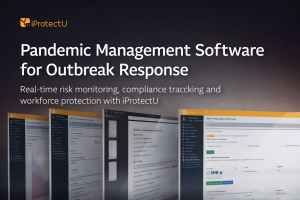Overview
World First Aid Day is an annual global event, organised by the International Federation of Red Cross and Red Crescent Societies (IFRC), to raise awareness about how first aid can save lives. It encourages people to learn basic first aid techniques, which can make a real difference in emergencies.
First aid training really isn’t time consuming – it can usually be achieved in three to six hours – which is not a big investment when we think of its potential benefits.
Why we should all complete First Aid Training
To save lives: Early intervention in emergency situations like choking or cardiac arrest can significantly improve the chances of survival.
To boost your safety awareness: The training process can make you more mindful of potential hazards in your environment.
For peace of mind: Knowing you have the skills to help those in need will help you feel more prepared to handle unexpected situations.
To minimise injury: Suitable first aid can prevent minor injuries from becoming serious. Trainees will learn how to treat sprains, dress wounds, and manage allergic reactions.
To have confidence in chaos: First aid training will empower you to stay calm and take charge in an emergency, with the ability to act decisively.
For your family: You’ll be competent to handle emergencies involving children, elderly family members, or pets.
To increase your employment prospects: First aid certification can be a valuable asset on your CV.
Fact or Fiction?
If someone feels faint, put their head between their legs? This is a mistake! If they put their head between their legs, they could fall forwards and injure themselves. Another common mistake is making the person sit up. The patient should lie down and raise their legs to get the oxygenated blood flowing to the brain.
Induce vomiting if a harmful substance is swallowed? Just no. If someone isn’t vomiting, don’t encourage it. Most toxic or poisonous substances cause burns that swell the airway. By encouraging vomiting, you are further damaging their airway as the vomit travels back up.
Aspirin for a heart attack? Not a good idea! Chewing aspirin to treat a heart attack is a dangerous myth. It can increase the risk of bleeding and internal complications.
Butter for Burns? Doesn’t work. This method does not stop the pain, prevent scarring or promote healing. It is simply a myth that has been around for centuries. The best way to treat a burn is by cooling it under running water for at least twenty minutes. You should then cover the burn with a dressing to keep out infection.
Honey for Burns? Believe it or not! Honey, a natural antibacterial agent, has been shown in some studies to be as effective as conventional treatments for minor burns.
Chocolate for Shock? Not quite! While sugary drinks might seem like a good idea for someone in shock, they can worsen the situation. Choose water or electrolyte drinks instead.
Superglue to stop bleeding? This is something you can use in an absolute emergency. It’s a temporary way to help seal up wounds to stop bleeding, if you don’t have anything else to hand. Of course, seek medical assistance as soon as possible.








